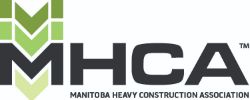Frequently asked questions
Generally speaking, dedicated companies can earn COR®/SECOR® in six to twelve months, not taking longer than eighteen months from registration date.
The time needed to acquire COR®/SECOR® certification depends on the organization and dedication of the company. If an employer has a comprehensive safety and health management system in place, the time required to arrange for and complete an audit, then have it reviewed by WORKSAFELY® for issuance of a COR®/SECOR® certificate, could be relatively short. However, if the employer is starting from the first steps involved in developing their safety and health program, the amount of time required to complete the process and implement the safety and health program elements will be significantly longer.
While there are specified mandatory courses required for COR®/SECOR® certification, keep in mind that Manitoba legislation requires that companies must ensure all their staff have completed the necessary training to effectively and safely perform their duties. Depending on the type of environment or the work involved, training may include courses over and above the specified COR®/SECOR® courses, such as Traffic Control Coordinator, Flagperson, TDG, or WHMIS.
Companies may wish to begin collecting and organizing COR®/SECOR® elements prior or during completion of the COR®/SECOR® training courses. While the WORKSAFELY® team will educate and assist companies in each of these tasks, here are some elements that can be initiated in the interim:
- Create a set of company rules.
- Gather legislation that is relevant to your company, such as the Manitoba Workplace Safety and Health Act and Regulations.
- Establish a joint occupational safety and health committee or appoint an occupational safety and health representative.
- Communicate company safety policies and rules to employees.
- Conduct hazard assessments.
- Train staff in emergency procedures.
- Review PPE and upgrade, maintain and train workers in its use.
- Have toolbox meetings.
- Conduct formal safety inspections.
- Document all of the above.
An audit is a comprehensive review of the employer’s safety and health management system. To qualify for a COR®/SECOR®, the audit must be carried out by a qualified auditor, using the National Standards COR®/SECOR® Audit Document obtained from the WORKSAFELY® team. Maintaining COR®/SECOR® requires performing internal or external audits on an annual basis. The audit covers the basic elements of a safety and health management system and will include interviews, documentation review and observation techniques. Internal audits must be carried out by a qualified auditor, that is, an individual who has taken all 3 COR® required courses and has submitted a trial audit within six months of taking the COR® Auditor course. To arrange for an external audit an employer must contact the WORKSAFELY® office and a qualified external auditor will be assigned.
To meet COR®/SECOR® standards, the internal/external audit must attain an overall score of at least 80% with no one section scoring lower than 50%. COR®/SECOR® audit procedures and policies are outlined in the COR™/SECOR™ Quality Assurance Program and Reference Book, and can be requested through the WORKSAFELY® team. The daily cost for external audits is set by the WORKSAFELY® Program, however, all related audit expenses will also be the responsibility of the company.
COR®/SECOR® certified employers must submit an action plan to the WORKSAFELY® team along with their audit document following any external/internal audit. This action plan is the responsibility of the company to produce, not the auditor. An action plan must address:
- Identified COR®/SECOR® program deficiencies (per element)
- Prioritization of concerns
- Details on proposed corrective actions that assign responsibilities, including a description of short-term and long-term strategic plans
- Any other requirements as determined by the WORKSAFELY® Director
- Targeted implementation schedules
The original completed audit document must be sent to the WORKSAFELY® team, along with an action plan for the ensuing year. The WORKSAFELY® team reviews the audit and action plan for quality assurance and will issue the COR®/SECOR® if the audit meets the required standard.
The COR®/SECOR® is valid for three years from the date of issue, providing that all maintenance requirements are met. The date the audit is completed is used as the COR®/SECOR® issue date. To maintain COR®/SECOR®, an employer is required to carry out an internal audit within 24 months of the issue date of the COR®/SECOR®. Internal audits are subject to the same quality assurance review as external audits. An external audit is required by the third COR®/SECOR® anniversary date to renew the COR®/SECOR®.
The COR® Quality Assurance Program and Reference Book is a comprehensive document outlining WORKSAFELY® policies and acceptable conduct in regards to acquiring, maintaining, auditing, and defaulting from the COR® program. This ‘rule book’ is a useful resource, providing answers to questions COR®/SECOR® companies might have and acts as a general guideline for the WORKSAFELY® team to follow.
Onus is on the company to maintain their COR®/SECOR® status. Should a company break the cycle by allowing their COR®/SECOR® to lapse, they must repeat the Year One process to re-instate their audit cycle.


